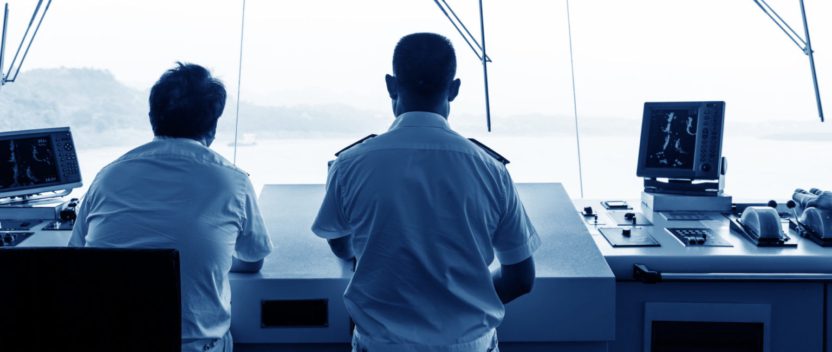Shipping IT – from the pits to the podium?
The shipping industry exhibits three distinct and related patterns of behaviour. The first is exceptionalism – a belief that it is different from other industries – the second, that it is misunderstood and underappreciated.
A third is that it is a lagging adopter of technology and therefore a poor market for information and communications technology (ICT) solutions providers. That may have been true before the financial crisis but to John Taxgaard, VP Maritime Services at Ericsson this analysis is wrong.
Ericsson has spent several years in the maritime industry connecting GSM users over satellite on passenger vessels and has some significant merchant sector contracts too. But even as a relative newcomer, he doesn’t recognise a naturally conservative industry.
“Ships are far larger than their immediate predecessors, so there’s a great deal of creativity and innovation within naval architecture. Operating these ships requires a step-change in technology because driving them requires new ship-handling techniques at sea and in ports,” he says.
All of this has a potential impact on the value chain, from cargo handling and risk management to financing. “It is the ability of the shipping industry to accept innovation that is perhaps one of its most enduring qualities. It is anything but conservative.”
As a company whose business is connectivity, Taxgaard observes that bigger data pipes and faster throughput mean that a small change in one area of the industry can have a disproportionate effect on another. As a result, owners are looking at how to make better use of ICT and the link between ship and shore operations has become vital.
But he also identifies a missing element; shipping companies could still derive more business-related information from their vessels.
“A lot of what has been achieved in the maritime sector has come from other industries, so I don’t believe that we can go forward without referring to what other industries are doing,” he says. “Just like them, the maritime industry has to address some issues to fully embrace the potential of ICT.”
While expanding satellite coverage and increases in data speeds will potentially have the greatest impact on the industry, he warns that in turn, constraints on network capacity that do not meet the new demand could limit growth and adoption. This is certainly true for a sector which is only now moving from constrained capacity to a demand-driven cycle.
“In both land-based and maritime sectors, the changing nature of business usage and the rise of the Internet of Things raise new infrastructure demands,” he adds. “As mobile data usage matures, low latency and far more uploads raise new challenges for network infrastructure.”
His experience shows three main reasons for lack of broader internet adoption: perceived absence of need, insufficient skills and affordability. Shipowners complain constantly of the last of these, but competition is acting to increase choice and drive down prices.
The key challenge he says, is planning for and deploying ICT infrastructure. Cloud-based systems, apps, and services already exist, addressing similar sectors such as energy and transport, but what has been lacking is a vision for building a specific maritime ICT infrastructure, or constructively using the data that it generates every day.
Talk of the maritime cloud immediately divides the room between those used to a process of database replication over narrowband connections and more visionary actors who are looking at new approaches and see the cloud forming.
Taxgaard says in terrestrial communications, network providers will often seek to offload applications to the cloud for convenience. But they too will face restrictions on bandwidth as well as communication and network overheads. In such cases, it is more efficient to execute applications locally and compress data for transmission.
Of course, much of the data that moves around in shipping is not just confidential but considered to be commercially valuable. In some cases it is opacity not transparency that makes money. This apparent contradiction has tripped up many companies which have proposed concepts that don’t fit with established industry practice.
But as the industry adapts to new business realities, can it really change mindset and embrace the sharing economy? Taxgaard doesn’t see this as a maritime issue, but one that needs to be addressed on a wider scale.
“There is an increasing pervasiveness of digital technologies in all sectors of society and a growing need to unlock value by removing frictions that prevent users from transporting and accessing their data and digital identities.”
This ‘digital dependency’ gives rise to new issues with respect to the ability of users to easily access and use their data across devices, networks, and applications, while at the same time raising privacy and security concerns around the use of their data by others.
“Left unaddressed, unwarranted limitations on seamless or universal data use could come to constitute a serious barrier to the industry’s ability to get basic things done, as well as to overall digital growth and economic activity,” he says, adding that while markets are generally the best mechanism for resolving such issues, public-sector assistance should not be ruled out, provided its parameters are clearly defined.
He also identifies an acceleration of more classical approaches to collaboration; the increased use of joint ventures, partnerships and alliances and a realisation that no one organisation can do everything.
“There has to be a shift in the way in which companies approach these relationships. Every industry is increasingly driven by the need to better serve the customer, wherever that customer’s need arises. In turn, customers are themselves subject to pressures which require them to become more efficient and to manufacture their product or provide their service at a lower cost,” he says.
The result is increased pressure on their suppliers – including ICT providers – to give a higher level of service at a lower cost. This suggests that there is a benefit to scale and having the ability to serve the customer in multiple locations.
Taxgaard’s philosophy for its own business sounds very much like the aims of the average shipowner in 2015. “We understand the need for growth through improving asset utilization – generating more revenue from the same asset – as well as the need for reducing costs and improving margins through the intelligent reuse of our internal resources.”
For shipping that inevitably means an understanding of what big data is and how it can help achieve those internal efficiencies. Taxgaard cites Formula 1 motor racing as probably the pinnacle, with hundreds of terabytes of data – more than is contained in the whole US Library of Congress – collected during every race.
Most industries can only dream of being at this top end of the use of big data, but given the scale of the productivity challenge facing shipping, he thinks shipping can draw from the example.
“Despite the amount of money involved, big data is about making educated decisions efficiently, which ultimately comes from measuring the right information. It’s the integrity, verification and analysis of the data where the value lies. Once you understand these things then you’re able to respond strategically and productively to the world around you.”
Ends


